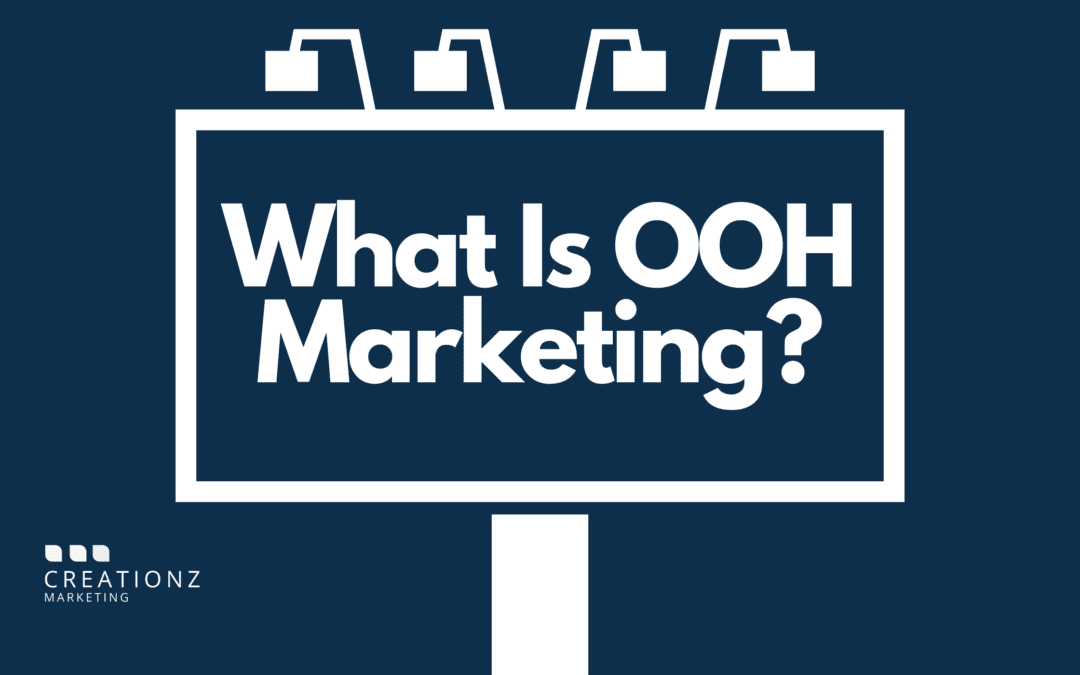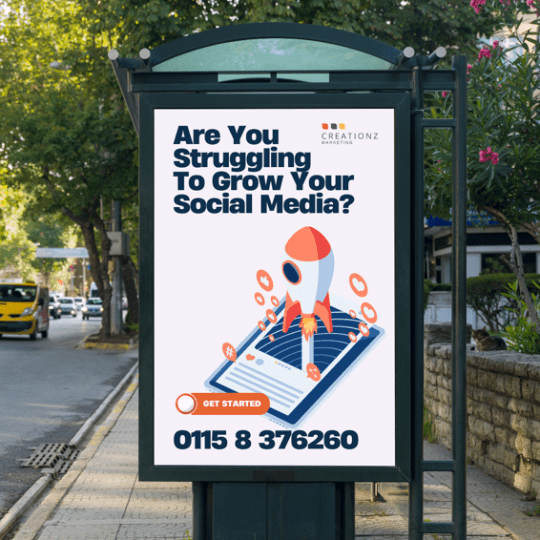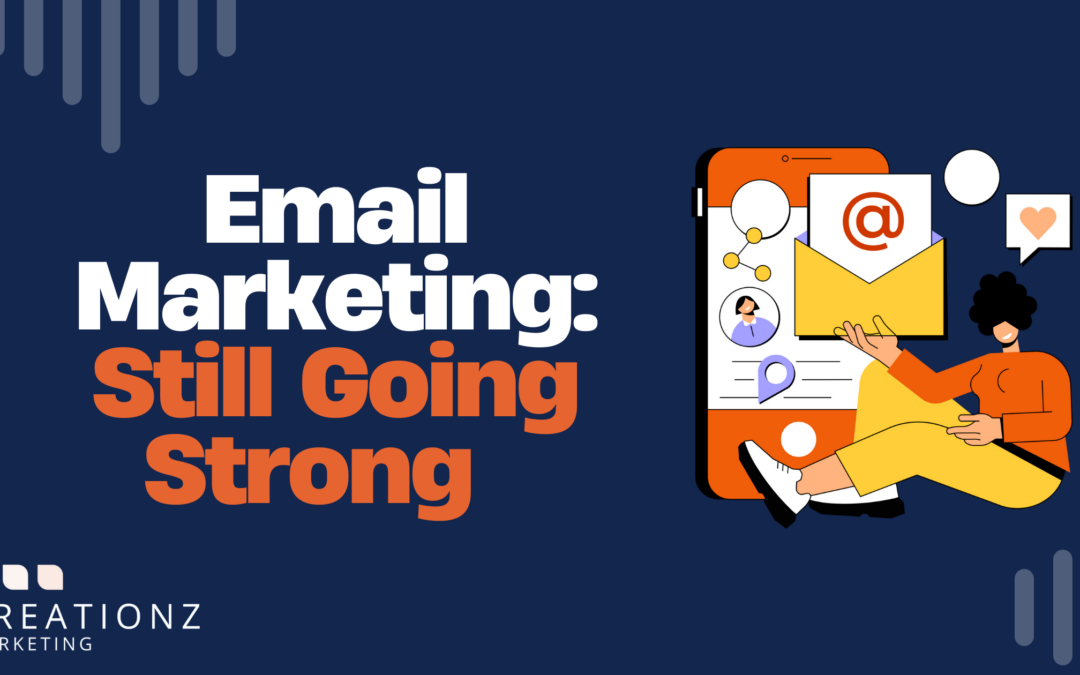
by Emily Robinson | Jul 9, 2025 | Social Media
The latest Instagram update is shaking up the world of social media and SEO and small businesses need to pay attention. Instagram posts, Reels, and profiles are now becoming searchable through Google, giving your content the chance to reach new audiences beyond the app.
In this blog, we’ll explain what this update means, why it matters, and how to optimise your Instagram account to make the most of this exciting change.
What Is the Latest Instagram Update?
In 2024, Instagram announced an update that allows public posts and profiles to appear in Google search results. Until now, Instagram content mostly stayed within the platform. But with this new feature, your posts can now show up when people search for relevant keywords on Google — dramatically increasing your content’s visibility.
Why Does This Instagram Update Matter for Small Businesses?
For small businesses, this Instagram update is a game-changer. It means:
✅ Greater visibility on the world’s most popular search engine
✅ More opportunities to attract potential customers
✅ Your social media content supports your overall SEO efforts
✅ You can get found by people who aren’t yet following you
If you’ve invested time and creativity into your Instagram posts, this update means they can now work even harder for your business.
How to Optimise Your Instagram for Google Search
To take full advantage of this Instagram update, here are simple steps you can follow to ensure your posts have the best chance of appearing in Google search results:
1. Use Relevant Keywords in Your Captions
Think like your customer. Use the words and phrases they’re likely to search for in your captions. For example:
“Looking for handmade candles in the UK? Our natural, eco-friendly candles are perfect for gifts and home decor.”
2. Add Alt Text to Your Images
Instagram lets you add alt text to describe your images. This improves accessibility and helps Google understand what your post is about.
3. Name Your Image Files Correctly
Before uploading, rename your image files with descriptive, keyword-rich names. Instead of IMG_1234.jpg, use something like handmade-candle-uk.jpg.
4. Use Relevant Hashtags
Hashtags still play a role in discoverability. Include a mix of broad and niche hashtags relevant to your post, product, or location.
5. Include Location Tags
Tag your business location in posts to boost visibility in local searches.
6. Update Your Privacy Settings
Head to Settings > Account Privacy, and toggle Allow public photos and videos to appear in search engine results. This ensures your content is visible to Google.
Who Benefits Most from This Instagram Update?
This update is fantastic news for:
- Small businesses looking to boost their organic reach
- Local businesses aiming to attract nearby customers
- E-commerce brands wanting to drive more traffic to their website
- Creators and influencers building their personal brand
At Creationz Marketing, we help SMEs and entrepreneurs make the most of opportunities like this by building joined-up marketing strategies that work across all platforms.
Final Thoughts: Don’t Miss Out on This Instagram Update
The latest Instagram update is another reminder that your social media and SEO strategy should work hand in hand. By optimising your Instagram content for search engines, you increase your chances of being discovered by the right people — even when they’re not on Instagram.
If you need help improving your social media or building a marketing strategy that gets results, get in touch with Creationz Marketing. We love helping businesses grow – and we can help you make the most of every marketing opportunity.
Looking for expert marketing support?
Contact Creationz Marketing today – your outsourced marketing team is just a click away.

by Emily Robinson | Mar 5, 2025 | Uncategorized
Let’s talk about Out-of-Home (OOH) marketing. It’s one of those things that’s been around forever, yet it’s still as relevant today as it’s ever been- maybe even more so.
With digital ads crowding every corner of our screens, there’s something special about stepping outside and seeing a billboard that just clicks. No logos, no hard sell – just a visual or message that you instantly associate with a brand.
You may have seen in the media that Heinz has done a series of billboard ads – “It has to be…” You don’t need to see the logo to know it’s Heinz. That’s the power of great OOH marketing. Google it, it is impressive.
What is OOH Marketing?
OOH marketing, or Out-of-Home marketing, is exactly what it sounds like: advertising designed to reach you when you’re out and about.
Think billboards, ads on buses and trains, digital screens in shopping centres, posters at bus stops, or even a quirky pop-up installation in the middle of a city square.
I remember when the tram system first launched in Nottingham. We sourced tram advertising for a campaign, and it was such an exciting opportunity to have our message moving across the city. That’s the beauty of OOH – it’s everywhere, it’s tangible, and it’s unavoidable (in the best possible way). It’s not just a throwback to traditional marketing; it’s proof that old-school strategies still packing a punch.
The Different Flavours of OOH Marketing
- Billboards – The OG of OOH. Whether it’s a classic printed poster or a high-tech digital screen, billboards dominate high-traffic spots and demand attention.
- Transit Advertising – Ever notice ads on buses, trains, or taxis? They’re like moving canvases, reaching people across areas and cities.
- Street Furniture Ads – Ads on benches, kiosks, and bus shelters are perfect for urban areas where people are on the move but have time to look around.
- Digital OOH (DOOH) – Those dynamic screens you see in airports, shopping malls, or stadiums? That’s DOOH, bringing flexibility and interactivity to the OOH world.
- Guerrilla Marketing – The wild card. This could be anything from a street art installation to a flash mob, designed to grab attention in unexpected ways.
Why Does OOH Marketing Work So Well?
- You Can’t Skip It – Unlike digital ads that you can scroll past or block, OOH is always there. It’s part of your environment.
- Massive Reach – From commuters to shoppers, OOH reaches a huge audience across different times and places.
- Instant Brand Recognition – Seeing a brand in a public space gives it credibility. It’s like saying, “We’re here, and we’re worth noticing.”
- It Amplifies Digital Campaigns – Pair an OOH ad with a digital push, and you’ve got a recipe for serious engagement. QR codes, hashtags, or call-to-action links can bridge the gap beautifully.
- It Sticks Around – OOH campaigns don’t vanish after a few seconds. They’re up for weeks, sometimes months.
How to Make OOH Marketing Work for You
- Pick Your Spot – Where’s your audience? Find the high-traffic areas they frequent.
- Keep It Bold and Simple – You’ve got seconds to make an impression. A clean, striking design with a strong message is key.
- Connect It to Digital – Add a QR code or a memorable hashtag so people can engage with your brand online.
- Track the Impact – Measure success through metrics like brand lift, foot traffic, or social mentions to see how your campaign resonates.
A Final Word
OOH marketing isn’t just advertising—it’s an experience. It’s the big, bold reminder of your brand’s presence in the real world.
And the best part?
It works for everyone—whether you’re a global name like Heinz or a small business wanting to make a splash. When done right, OOH has the power to stop people in their tracks, spark conversations, and leave a lasting impression.
So, are you ready to step outside the screen and go big with OOH?

by Emily Robinson | Dec 4, 2024 | Marketing Planning
As 2024 comes to a close, now is the perfect time to set your sights on the opportunities ahead. A new year brings the promise of fresh starts, but without a marketing plan in place, it’s all too easy to lose momentum and waste valuable time and resources.
Marketing planning isn’t just about setting goals—it’s about creating a roadmap to help you navigate your journey effectively. A well-thought-out plan ensures you focus your energy on the right activities, allocate your budget efficiently, and communicate with your audience consistently.
At Creationz Marketing, we believe that every business deserves the tools and support to market effectively. That’s why we’re here to share why marketing planning is essential and how you can make 2025 your best year yet.
Why Is Marketing Planning So Important?
Marketing planning is the cornerstone of success for any business. It’s what transforms vague ideas into actionable steps and ensures your efforts are purposeful and results-driven. Without a plan, you risk spreading your resources too thin, jumping from one activity to the next without clear direction.
A solid marketing plan helps you:
- Align your marketing activities with your overall business goals, ensuring every action supports your long-term vision.
- Maintain consistent messaging across all platforms, which is crucial for building trust and recognition with your audience.
- Track your results, identify what’s working, and adapt your strategy to stay competitive in an ever-changing market.
- Save time and resources by focusing on activities that drive results, rather than wasting energy on ineffective efforts.
Think of marketing planning as the foundation of your business’s growth. With a clear roadmap, you’ll be able to move confidently toward your goals, knowing your efforts are targeted and impactful.
How to Start Planning Your Marketing for 2025
Getting started with marketing planning can feel overwhelming, but it doesn’t have to be. Follow these simple steps to lay the groundwork for a successful year ahead:
1. Reflect on 2024
Before you plan for the future, take time to look back. What worked well this year? What didn’t? Did certain campaigns perform better than others? Did specific platforms drive more engagement? Reflecting on the past gives you valuable insights to shape your strategy for the future. Don’t let yourself get stuck on this stage, download our marketing audit to start your planning on the right foot.
2. Define Your Goals
What do you want to achieve in 2025? Whether it’s increasing brand awareness, generating leads, or boosting sales, setting specific, measurable goals gives your plan a clear direction.
3. Know Your Audience
Understanding who you’re speaking to is essential. What are their pain points? What motivates them? What platforms do they use? Tailoring your marketing to your audience ensures your messaging resonates and drives action.
4. Allocate Your Budget
Decide how much you’re willing to spend and where to invest it. From social media advertising to email campaigns, ensure your resources are allocated to the activities that align with your goals and deliver the best return on investment.
5. Create a Content Calendar
A content calendar is your best friend when it comes to staying organised. Plan your content around key dates, seasonal trends, and industry events. This ensures your messaging is timely, relevant, and consistent throughout the year. Need help? We offer content planning support that is tailored to your business. Arrange a discovery call with us to find out more.
The Benefits of a Well-Planned Marketing Strategy
When you have a marketing plan in place, the benefits are endless:
- Consistent Growth: Stay focused on your objectives and avoid wasting time on activities that don’t move the needle.
- Stronger Brand Identity: Consistent messaging across all platforms helps build trust and recognition with your audience.
- Adaptability: In a rapidly changing marketplace, having a plan allows you to pivot quickly and stay competitive.
- Efficient Use of Resources: A clear plan eliminates guesswork, saving you time, money, and energy.
New to Marketing? Meet the Marketing Mentor Hub
Starting a career in marketing or taking on new responsibilities can feel overwhelming, but you don’t have to do it alone. That’s where our Marketing Mentor Hub comes in.
Designed for recent graduates, career changers, apprentices, or anyone returning to work after a break, the Mentor Hub is a supportive community that provides resources, training, and guidance to help you build confidence in your role.
Inside the Mentor Hub, you’ll find:
- Practical tools and guides to help you master the basics.
- A community of like-minded marketers to share advice and support.
- Access to regular Q&A sessions and expert advice to keep you on track.
It’s everything you need to kickstart your marketing career or refine your skills—all in one place.
Learn more about the Marketing Mentor Hub here.
Final Thoughts: Make 2025 Your Best Year Yet
Don’t let 2025 sneak up on you without a plan in place. Taking the time to develop a clear marketing roadmap now will set your business up for growth, efficiency, and success in the year ahead.
Ready to take your marketing to the next level? Let Creationz Marketing guide you every step of the way.

by Emily Robinson | Nov 13, 2024 | Email Marketing
When was the last time you updated your email footer?
If you’re like most people, the answer is probably “a while ago.” Many businesses set up an email footer with the basics—name, address, website link, maybe a social media icon or two—and then forget about it. But did you know your email footer can actually be a powerful marketing tool?
At Creationz Marketing, we often find that businesses focus on big-ticket marketing items like websites, Google Ads, or social media campaigns. While those are essential, it’s easy to overlook simpler, cost-effective strategies that can make a significant impact. One of those strategies? Optimising your email footer.
A well-designed, dynamic email footer can drive traffic, build brand awareness, and engage recipients without adding any extra time to your daily routine.
Ready to make your email footer work harder for your brand? Here’s how you can turn it into a powerful marketing tool:
Why Your Email Footer Matters
Every email you send is an opportunity to reinforce your brand, share valuable content, and drive action. Think about how many emails you send each week—whether it’s responding to clients, following up on leads, or communicating internally. That’s a lot of potential touchpoints to spread awareness and promote your offerings.
Your email footer is like a mini billboard that appears in every single email you send. With a few tweaks, you can turn it into a tool that actively supports your marketing goals.
Creative Ways to Use Your Email Footer
Here are some ways to make your email footer more dynamic and purposeful:
Promote Your Latest Blog Post
Keep your audience informed and engaged by sharing a recent blog post. Linking to fresh content can drive traffic to your blog, showcase your expertise, and boost SEO performance. Regularly updating this link with your latest content keeps things relevant and engaging.
Highlight an Upcoming Event
Are you hosting a webinar, workshop, or live event? Let your audience know! Adding event details to your footer can increase attendance without needing to send a separate invite.
Share a Customer Testimonial
People love to see real experiences from real people. Highlight a glowing testimonial in your footer to build trust and showcase the impact of your services.
Encourage Sign-Ups for Your Newsletter
Grow your email list by inviting people to subscribe to your newsletter directly from your footer. This is a simple yet effective way to capture more leads over time.
Promote a Specific Service or Product
Do you have a new product, service, or special offer? Promote it in your footer! Direct links can guide your audience to a specific landing page, making it easy for them to explore your offerings.
Celebrate Recent Achievements
Share any recent milestones or awards your business has received. It’s a great way to build credibility and let your audience know about your accomplishments.
Highlight Your Social Media Channels
Social media plays a significant role in connecting with your audience. Encourage people to follow you by linking your social media profiles in your footer, or promote a specific platform where you’re active.
Introduce a Free Resource
If you have a valuable free resource—like a checklist or guide—use your footer to let people know! Sharing a free, useful tool can provide value to your recipients and build your brand as a helpful resource.
Tips for Making Your Email Footer Stand Out
Now that you have some ideas, here are a few tips to ensure your footer gets noticed:
- Change It Regularly: Keep things fresh by updating your footer every few weeks. Whether it’s promoting a new blog, an upcoming event, or a new testimonial, switching things up will keep your audience engaged.
- Use Clear, Concise Language: Keep it short and sweet. An email footer should be quick to read and easy to understand. Use action-oriented language like “Read our latest blog,” “Join our newsletter,” or “Discover our new service.”
- Add Visual Interest: Use icons, dividers, or a splash of color to make your footer visually appealing. However, keep it consistent with your brand style to ensure it doesn’t look out of place.
- Track Your Links: Use UTM parameters to track which links in your email footer are getting clicks. This can help you understand what content resonates with your audience and refine your strategy.

New To Marketing and Need Extra Support?
Starting a career in marketing can be overwhelming, especially if you’re new to the industry or returning after a break. That’s why we created the Marketing Mentor Hub—a dedicated space designed to support those who are just getting started or need a refresher. Whether you’re a recent graduate, apprentice, transitioning from a different career, or coming back from maternity leave or an extended medical break, our Mentor Hub provides the resources, guidance, and community you need.
Inside the Mentor Hub, you’ll find practical tools, easy-to-follow guides, and a supportive network of fellow marketers, all ready to help you build confidence and skills at your own pace. Plus, you’ll have access to industry insights, regular Q&As, and expert advice to keep you on track as you grow in your role.
Discover more about the Marketing Mentor Hub and join here.

by Emily Robinson | Oct 28, 2024 | Email Marketing, Marketing Planning
Despite the rise of social media, video marketing, and influencer trends, email marketing continues to be one of the most effective tools for small businesses. Need to update your email marketing database? We’ve got a blog to help you do just that! Learn how to build and own your own data rather than relying solely on social media connections.
If you’ve heard that email marketing is dead, think again. In reality, email is evolving, offering new opportunities for engagement, growth, and ROI.
In this post, we’ll explore the key benefits of email marketing for small businesses, dispel the myth that it’s outdated, and answer the pressing question: What actually is a good open rate?
Why Email Marketing Is Still a Powerful Tool
While other marketing channels come and go, email remains a direct and reliable way to reach your audience. Here’s why email marketing is still crucial for your business:
1. Direct Access to Your Audience
With email, you’re not at the mercy of ever-changing algorithms (like on social media). You can directly communicate with your customers in their inbox, giving you full control over your message and when they receive it.
2. Personalisation and Segmentation
Email allows you to segment your audience based on demographics, purchasing history, or engagement levels. You can send personalised messages that resonate with specific groups, leading to higher open rates and better results.
3. Automated Campaigns for Consistent Engagement
Automated email campaigns, such as welcome emails or abandoned cart reminders, work in the background, helping you nurture leads, convert prospects, and retain customers without requiring constant manual effort.
4. Cost-Effective with High ROI
For small businesses, email marketing is highly cost-effective. In fact, according to the Data & Marketing Association, email has an average ROI of £35 for every £1 spent—significantly higher than most other channels.
5. Measurable and Trackable
You can easily monitor the success of your campaigns with metrics like open rates, click-through rates, and conversions. This data-driven approach helps you refine your strategy and ensure your efforts are driving real results.
Email Marketing Isn’t Dead—It’s Evolving
Email marketing has come a long way from the days of generic bulk messaging. Modern email marketing is highly targeted, personalised, and automated. What’s more, with the rise of mobile usage, people are checking their emails on the go—making email even more relevant today than ever.
Contrary to what some might believe, email remains a preferred communication channel for most consumers. Recent studies show that 99% of consumers check their email daily (HubSpot), and for many, it’s still their preferred method of receiving updates from businesses.
FAQs: Frequently Asked Questions About Email Marketing
Email marketing can be a powerful tool, but knowing how to maximise its potential is key. Below are some common questions businesses ask about how to succeed with email marketing.
What Is a Good Open Rate for Email Marketing?
One of the most common questions businesses ask is, “What’s considered a good open rate?”
The answer can vary depending on your industry, but for most small businesses, an average open rate falls between 15% and 25%. If your open rate is higher than 25%, you’re performing above average, and anything over 30% is exceptional.
Factors influencing your open rate include:
- Email subject lines: Clear, enticing subject lines help your emails stand out in crowded inboxes.
- Personalisation: Emails that address the recipient by name or reference their recent activity tend to have higher open rates.
- Time of day: Sending your emails at the right time—when your audience is most likely to check their inbox—can make a huge difference.
How Often Should I Send Email Marketing Campaigns?
When it comes to email marketing, one of the most common questions is, "How often should I be sending emails to my subscribers?" The answer depends on your audience and the type of content you’re offering.
For most small businesses, sending one to two emails per week is a good starting point. This keeps you top of mind without overwhelming your subscribers. However, consistency is key! If your audience expects a weekly newsletter, stick to that schedule. If you're running a promotion or event, sending more frequent updates makes sense.
Tips for Email Frequency:
- Test different frequencies: Some audiences prefer fewer emails, while others are happy with regular updates.
- Look at your engagement data: If open rates and click-through rates drop, you might be sending too often.
- Provide value: Every email should offer something of interest, whether it’s a special deal, helpful information, or an exciting announcement.
Remember, it’s all about finding the right balance for your audience.
What Makes a Good Email Marketing Campaign?
People often ask, "What does a good email marketing campaign look like?" A good campaign combines the right content, design, and timing to create something that not only catches the reader's attention but also encourages them to take action.
Here are the key elements of a great email marketing campaign:
-
Strong Subject Line: Your subject line is the first thing people see. Make it clear, enticing, and relevant to the email content. Keep it short—ideally under 50 characters.
-
Engaging Content: Whether you’re promoting a product, sharing a blog post, or offering a discount, the content should be engaging, relevant, and helpful to your audience.
-
Clear Call to Action: Tell your readers exactly what you want them to do—whether it's clicking a link, booking a call, or making a purchase. Make the call to action easy to find and compelling.
-
Responsive Design: With so many people opening emails on their phones, your design must look great on mobile devices. Test it out on different devices before sending.
-
Optimised Sending Time: The timing of your campaign matters. Try to send your emails when your audience is most likely to be checking their inbox—usually mid-morning during the workweek.
A good email campaign builds a connection with your subscribers and encourages them to engage with your brand in a meaningful way.
How Do I Build An Email List?
Building an email list is crucial for any business, but the best approach can vary depending on your industry. Below, we've outlined strategies tailored to different types of businesses—whether you're in B2B, professional services, or consumer-focused industries, these tips will help you grow your list and engage your audience.
B2B Email List Building: Offering Value for Lead Generation
- In B2B, building an email list is all about offering valuable content that addresses the specific needs of potential clients.
- Resources like whitepapers, industry reports, or case studies can be gated, requiring users to provide their email in exchange. Webinars, in-depth blog content, and tools such as downloadable templates can also drive sign-ups.
- This approach positions your business as a thought leader while providing actionable solutions.
Professional Services: Building Trust and Expertise with Email Marketing
- For professional services such as solicitors or accountants, building an email list is best achieved through the distribution of educational resources.
- Free guides on legal or financial topics, access to exclusive webinars, or regular newsletters sharing important updates can encourage sign-ups.
- These clients are typically looking for trustworthy, expert advice, so your email content should focus on building credibility and offering practical, easy-to-understand guidance.
B2C Email List Growth: Incentives to Attract and Engage Consumers
- In B2C businesses, email list growth is often driven by attractive incentives.
- Offering a discount, free gift, or early access to sales in exchange for an email sign-up is a proven method. Pop-ups, promotional banners, and social media call-to-actions highlighting these benefits can help capture consumer attention.
- Regularly engaging your subscribers with exclusive offers and personalised recommendations keeps them loyal and encourages repeat business.
Conclusion: Don’t Give Up on Email Marketing
Email marketing is far from dead. It remains a versatile, cost-effective, and powerful tool for small businesses looking to connect with their audience in a meaningful way. By focusing on segmentation, automation, and personalisation, you can create email campaigns that engage your audience and deliver results.
And remember: A good open rate is around 15%-25%, but with the right strategy, you can push that even higher.
Ready to improve your email marketing efforts? Book a free discovery call with us today and find out how we can help you create an email strategy that works for your business.
Ready to improve your email marketing efforts?
Book a free discovery call with us today and find out how we can help you create an email strategy that works for your business.











